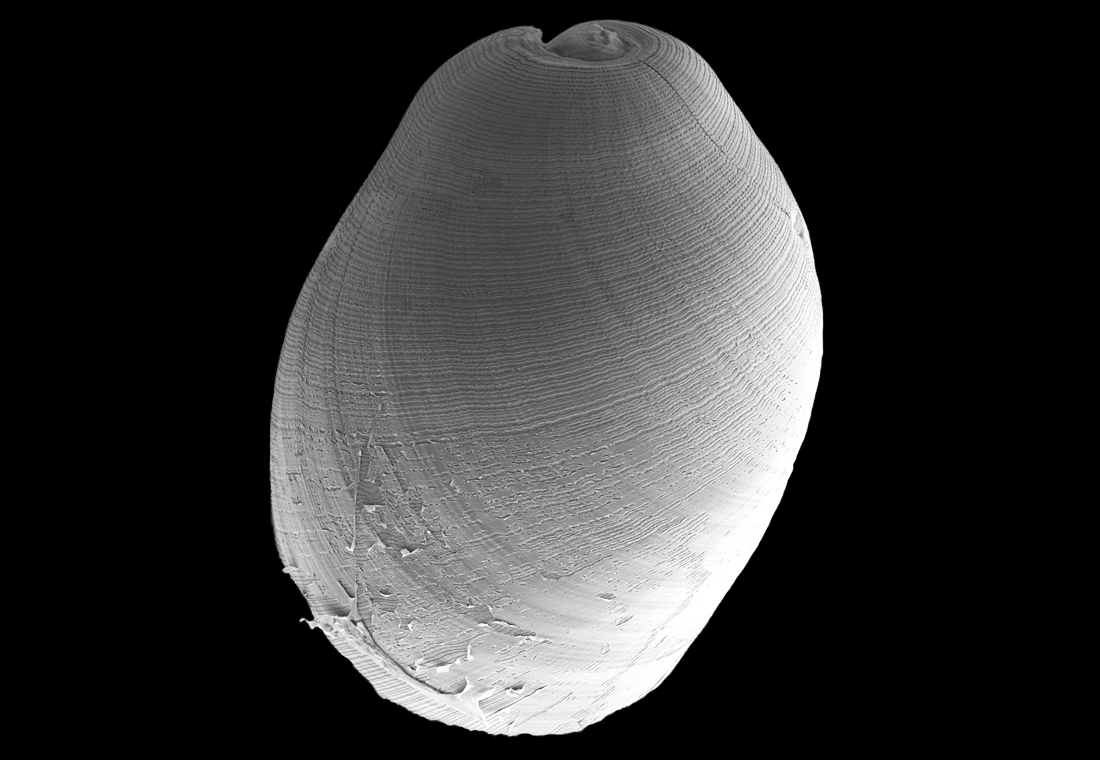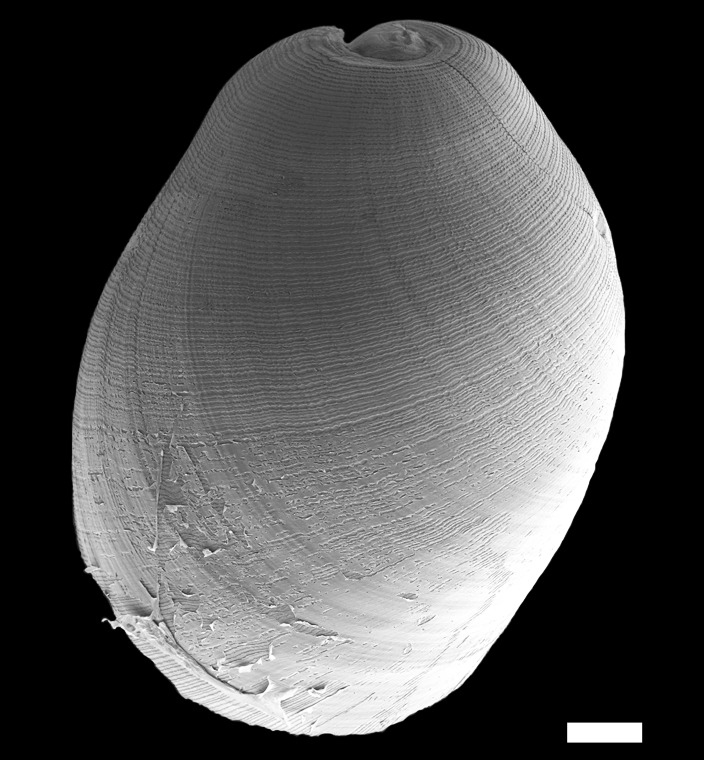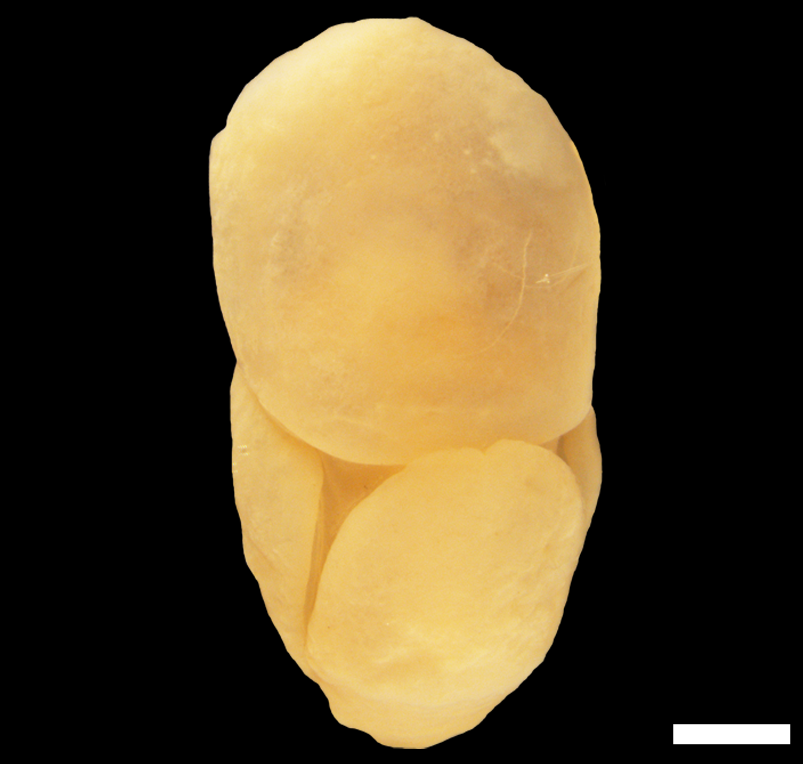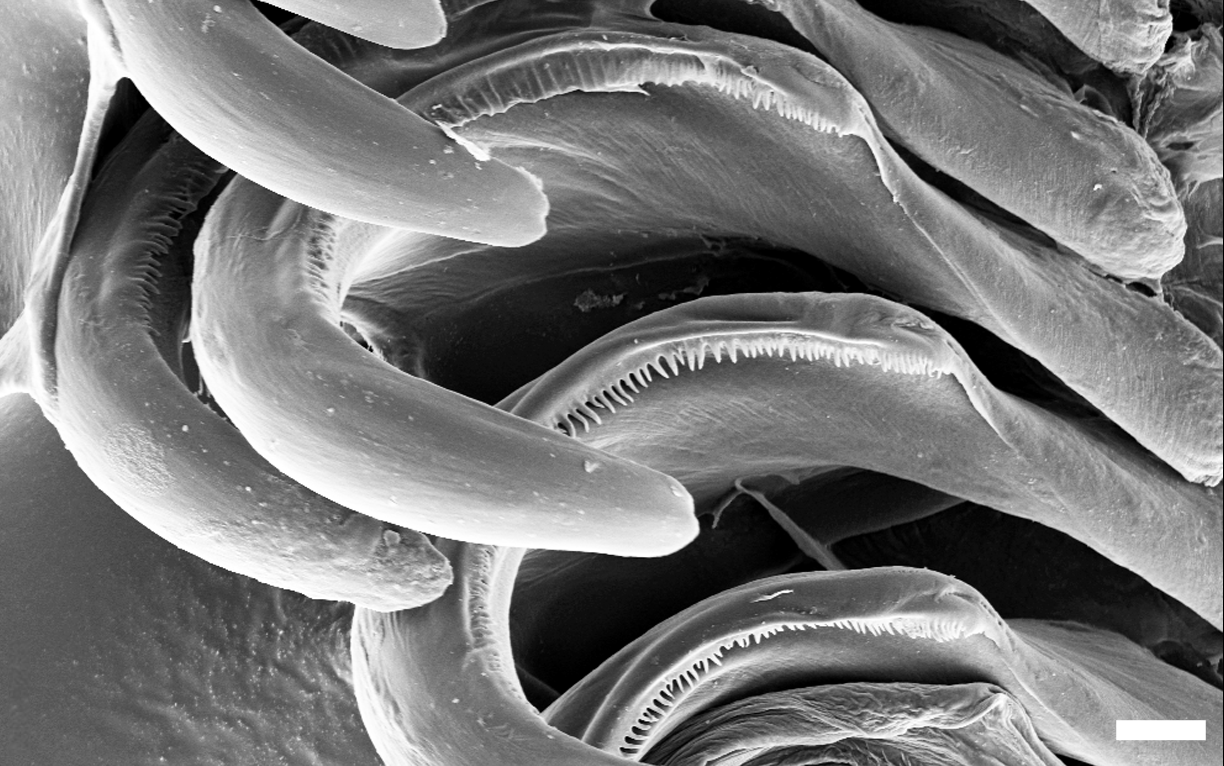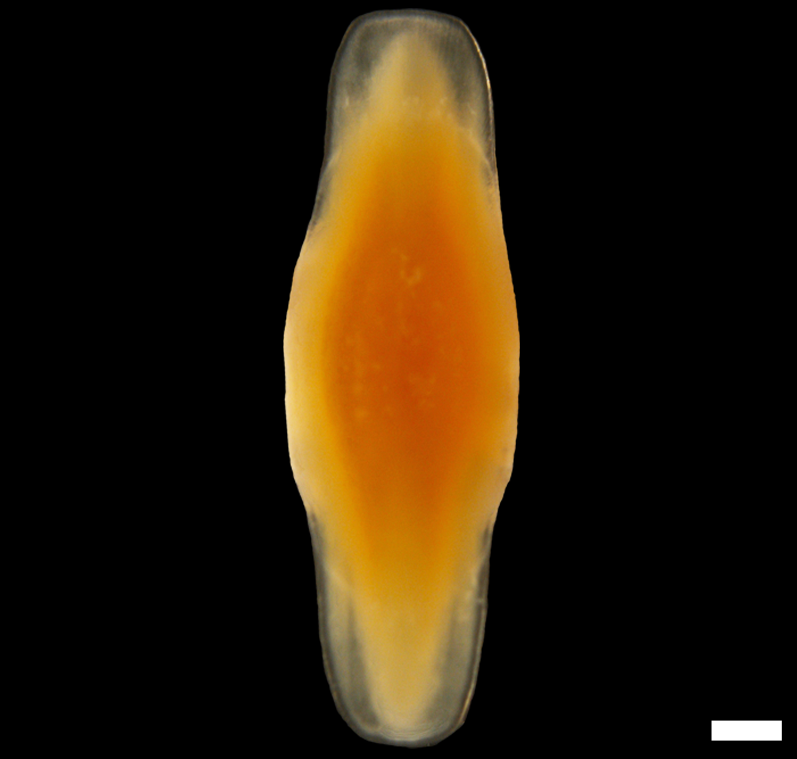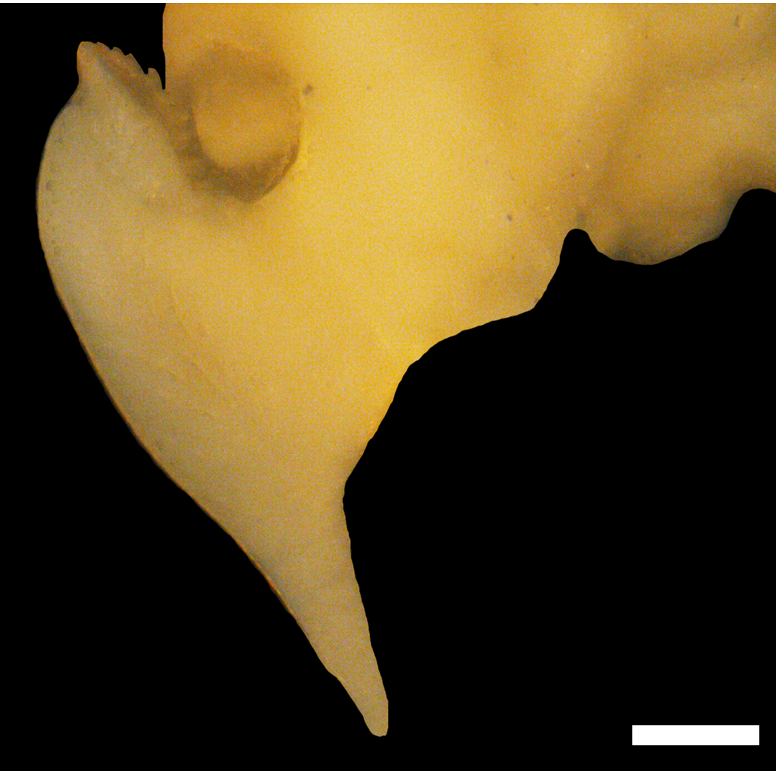Philine finmarchica
Shell description
The thick shell is internal and white, with a squarish-oval shape when viewed from above. The opening is wide and the outer edge is smooth. The top of the shell (apex) is blunted and slightly sunken into the shell. The shell is slightly umbilicated. The pattern of the shells surface consists of pits fused that form grooves. The size of the shell varies between 2.5–10.9 mm.
Animal description
The body is completely white and the tissue covering the shell (mantle) is thick. The pattern of the shell is not visible through the mantle. The head shield is indented and has no middle groove. There are side extensions of the foot (parapodial lobes).
Anatomy
The radula consists of 15–16 rows of teeth, with no outer lateral or central tooth, however there is one inner lateral tooth on each side. These inner lateral teeth are curved with rounded tips and a broad base, the inner edge is denticulate. The gizzard is elongate cylindrical and covered by muscle fibres. The gizzard contains three identical spindle-shaped gizzard plates; these plates are amber in colour on one side and lighter on the other side and are surrounded by a transparent margin. The male reproductive system consists of a long and thin prostate and a sack-shaped penis chamber.
Ecology
In Norway this species was found to be dominant on the continental slope down to 1000 m, but has been found at 2304 m. It lives at temperatures around 0 °C and occurs on mud. The gizzard of some specimens contained foraminiferans.
Geographical distribution
This is an amphi-Atlantic Arctic species occurring in North America, north of Cape Cod, Greenland, Iceland, and over Svalbard and the Barents Sea to eastern Siberia. In Norway it is found north of Bodø and on the continental slope as far south as Ålesund.
References
Ohnheiser LT og Malaquias MAE (2013). Systematic revision of the gastropod family Philinidae (Mollusca: Cephalaspidea) in the northeast Atlantic Ocean with emphasis on the Scandinavian peninsula. Zoological Journal of the Linnean Society 167(2): 273-326. DOI: 10.1111/zoj.12000.
